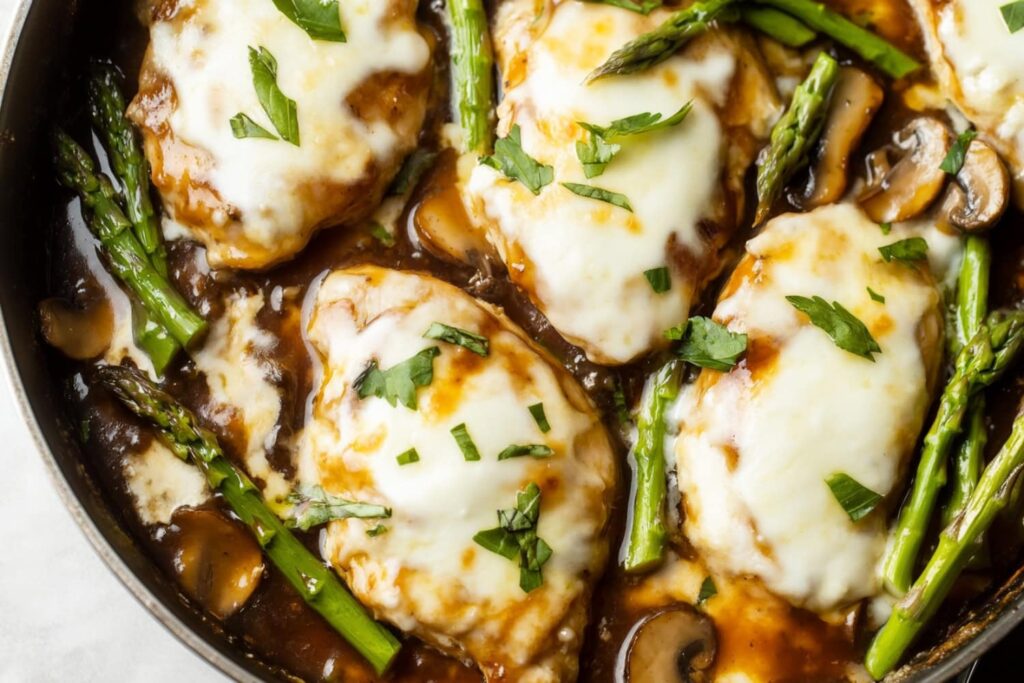Hiyashi Chuka (Cold Japanese Ramen Noodles)
Picture a warm summer day where the sun is shining brightly, and the temperature is soaring. On days like these, nothing hits the spot quite like Hiyashi Chuka—a vibrant, chilled noodle salad that’s perfect for quenching your thirst and satisfying your cravings. This delightful Japanese dish encompasses a symphony of flavors and textures, featuring slippery noodles, crunchy veggies, and a tangy dressing that will keep you coming back all summer long. Beyond its deliciousness, Hiyashi Chuka is packed with hydration, digestive support, and exceptional versatility, making it the quintessential summer staple. Let’s dive into this delightful dish and explore why it deserves a spot on your plate during the hottest months.
Benefits of Hiyashi Chuka
Hiyashi Chuka is more than just a meal; it’s a refreshing escape from the sweltering heat. This colorful dish blends cool noodles with crisp vegetables and a zesty dressing that not only tantalizes your taste buds but also hydrates you on those blistering hot days. Each ingredient in Hiyashi Chuka comes together to create a delightful medley that nourishes and revitalizes.
The star of Hiyashi Chuka is undoubtedly the vegetables, which play a vital role in keeping you hydrated. With refreshing cucumber slices, juicy tomatoes, and the crunchy goodness of kaiware radish and bean sprouts, you’ll enjoy a crunchy, satisfying experience with each bite. On hot days, this dish serves as a delicious remedy to keep you cool and hydrated.
The Digestive Boost
In addition to refreshing your palate and hydrating your body, Hiyashi Chuka is an excellent ally for digestive health. Sometimes, a heavy meal can leave you feeling sluggish, but this light noodle salad is designed to ease that discomfort while supporting your digestive system.
The key lies in the thoughtfully chosen ingredients. With a variety of fresh vegetables like cucumber and bean sprouts, Hiyashi Chuka aids digestion thanks to its high fiber content. Cucumber, for instance, is not only hydrating but also contributes to smoother digestion.
Furthermore, the acidic dressing, primarily featuring rice vinegar, works wonders for the digestive process. Vinegar has been celebrated for ages as a natural remedy, aiding in the breakdown of fats and proteins, thus improving nutrient absorption.
Endless Customization
Another fantastic aspect of Hiyashi Chuka is its incredible versatility. This dish can easily be tailored to your individual tastes and dietary preferences, whether you’re a seafood lover or a vegetarian. Traditional toppings like shredded chicken, thinly sliced ham, and crunchy cucumber can be lovingly swapped out for shrimp, imitation crab, or tofu, inviting you to create a unique version of this classic dish. Let your creativity shine as you experiment with different ingredients that please your palate.
This colorful dish is equally suitable for lunch or dinner, making it a delightful option at any time of day. The wealth of colors, varied textures, and balanced flavors make Hiyashi Chuka not just a meal, but a sensory experience. Whether you need a light yet satisfying dish during the heat of summer or a nutritious meal that won’t leave you feeling sluggish, Hiyashi Chuka is adaptable to your needs and preferences.
Expert Tips for Creating the Perfect Hiyashi Chuka
To achieve the best flavor and texture, it all starts with selecting the right noodles. Traditional recipes recommend using ramen or Chinese egg noodles, which impart a deliciously chewy texture and pair perfectly with the accompanying toppings and dressings. Feel free to explore alternative options like soba or rice noodles for a fun twist—just ensure they complement the overall flavor profile.
Next comes the toppings—get creative! Hiyashi Chuka can feature a broad array of vibrant vegetables such as cucumber, radish sprouts, carrots, or even corn. Pair these with proteins like sliced chicken, shrimp, or tofu, and don’t be shy to mix in seasonal delights like fresh cherries or peach slices. Aim for thin, uniform slices of toppings to guarantee a beautiful presentation and an even flavor experience.
As always, balance is essential when crafting your dressing. The traditional sauce for Hiyashi Chuka combines soy sauce, rice vinegar, sesame oil, and sugar to create a tangy yet slightly sweet flavor. Of course, you can tweak the ratios or add your twist—perhaps a touch of chili oil for heat or creamy Kewpie mayonnaise for richness. Trust your taste buds to guide you to the perfect harmony.
Lastly, never underestimate the power of presentation. An artfully arranged dish can elevate the dining experience. Arrange the toppings neatly over a bed of noodles, embellish with a sprinkle of toasted sesame seeds or a drizzle of savory soy glaze, and serve with a side of pickled ginger and mustard for guests to customize their dish.
Ingredients
- 4 packages of fresh ramen noodles (4-4.2 oz. each)
- Sesame oil (as needed)
- 2 eggs
- A pinch of salt or dash of soy sauce
- Neutral oil (for omelettes, as needed)
- 1 large tomato, thinly sliced
- 9 oz of blanched bean sprouts
- 1 bunch of kaiware radish sprouts, trimmed
- 3 ½ oz of cooked ham, cut into strips
- 5 ¼ oz of fresh or canned crab meat, cartilage removed
Sauce (If you’re a fan, feel free to double the quantities):
- 7 tbsp of rice vinegar
- 3 tbsp of soy sauce
- 2 tbsp of white sugar
- 4 tbsp of water
- 1 tbsp of sesame oil
Garnishes
- Toasted white sesame seeds
- Red pickled ginger
- Chinese-style mustard (karashi)
Instructions
- Boil the noodles for about three minutes or until they are just done. Drain them and rinse with cold water. Drizzle a little sesame oil over the noodles, then gently mix with your hands. Set them aside.
- Beat the eggs, seasoning with a bit of salt or soy sauce. Use a little neutral oil to lightly coat the pan and cook several thin omelettes. Allow to cool, then cut them into quarters and slice them into thin strips. Prepare the vegetables, ham, and crab, keeping them ready for assembly.
- Combine all sauce ingredients, and ideally, let them chill for about an hour for enhanced flavor.
- To serve, plate some noodles into four deep-rimmed bowls. Arrange the toppings in a visually pleasing manner, starting from the center and working outward, resembling a colorful pie. Drizzle the chilled sauce over the top and generously sprinkle with sesame seeds. Serve with red pickled ginger and mustard on the side for added flavor.
Frequently Asked Questions (FAQ)
- 1. Can I use different types of noodles for Hiyashi Chuka?
- Absolutely! While traditional recipes use ramen or Chinese egg noodles, you can also try soba or rice noodles for a twist.
- 2. Is Hiyashi Chuka suitable for meal prep?
- Yes, Hiyashi Chuka is perfect for meal prep. Prepare all components in advance, and when ready to eat, assemble just before serving.
- 3. What if I want a vegetarian version of Hiyashi Chuka?
- Simply omit any meat and add tofu or additional veggies such as bell peppers or mushrooms for a satisfying vegetarian meal.
- 4. How long can I store leftovers of Hiyashi Chuka?
- Hiyashi Chuka is best enjoyed fresh, but you can store leftovers in the fridge for up to 2-3 days in an air-tight container.
- 5. Can I make the sauce in advance?
- Yes! You can prepare the sauce a day ahead, and its flavors will deepen and enhance when allowed to chill.











